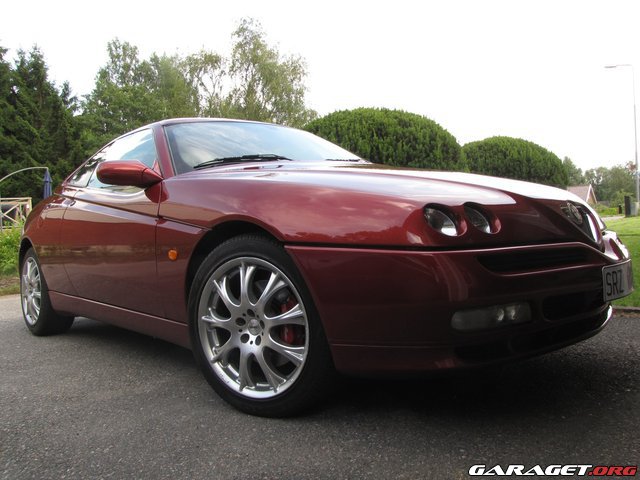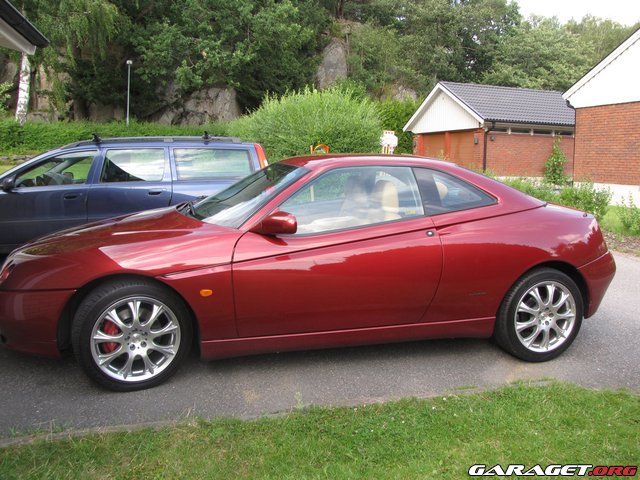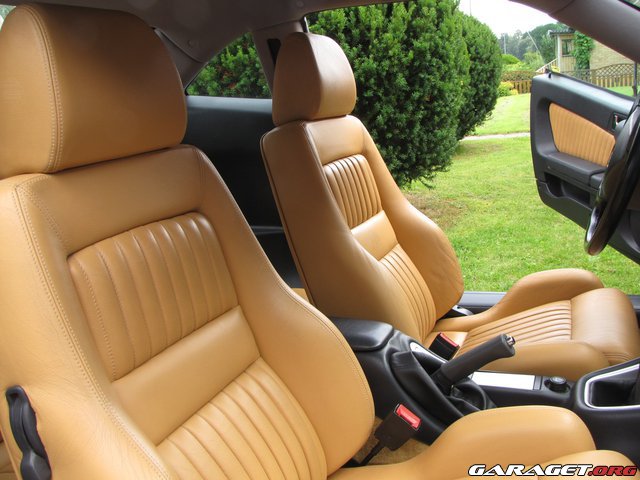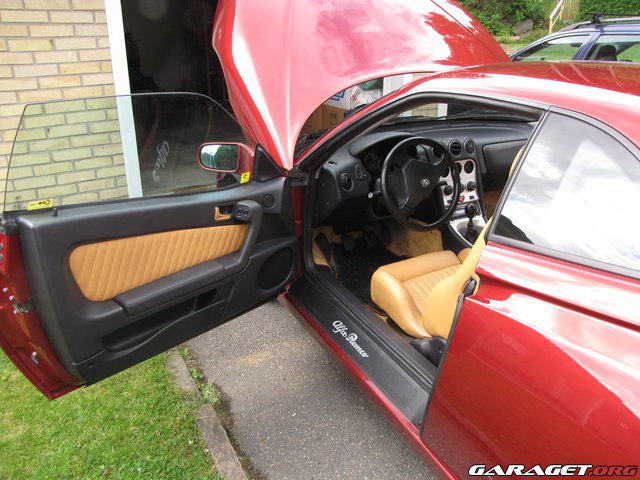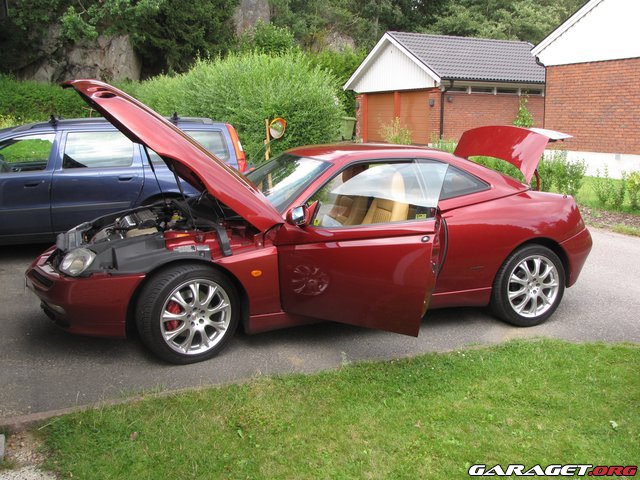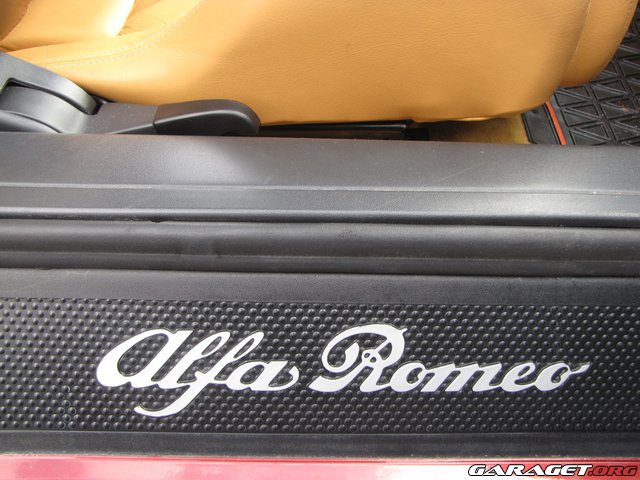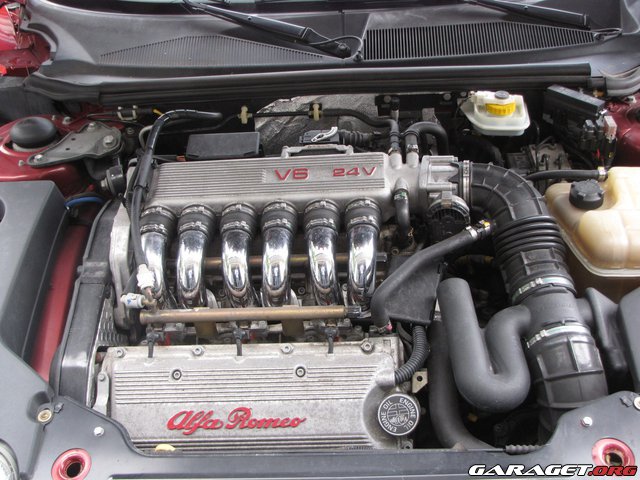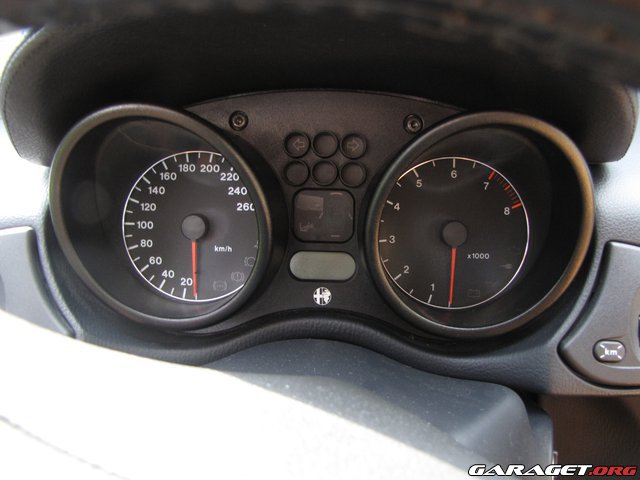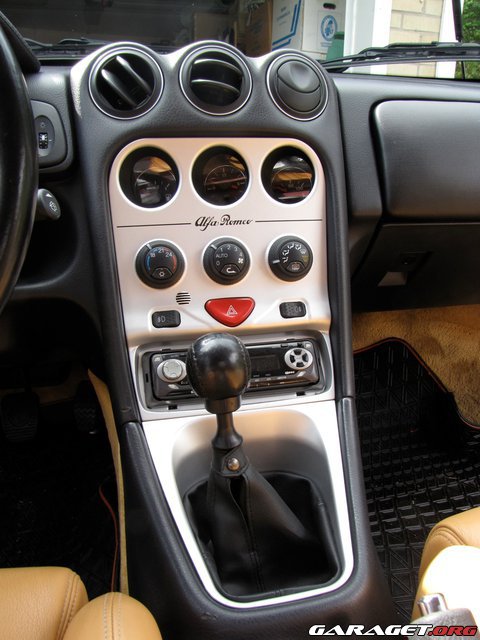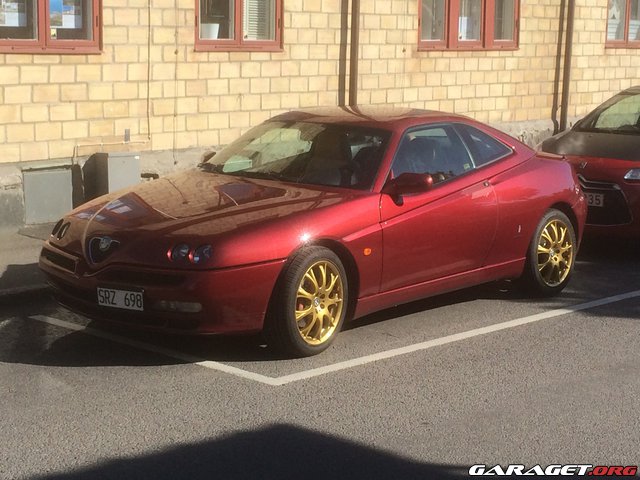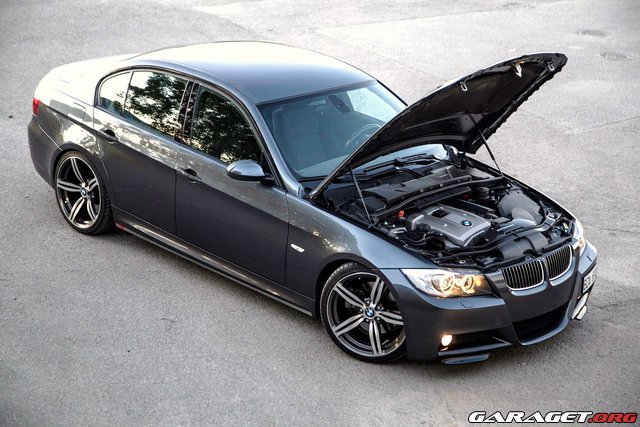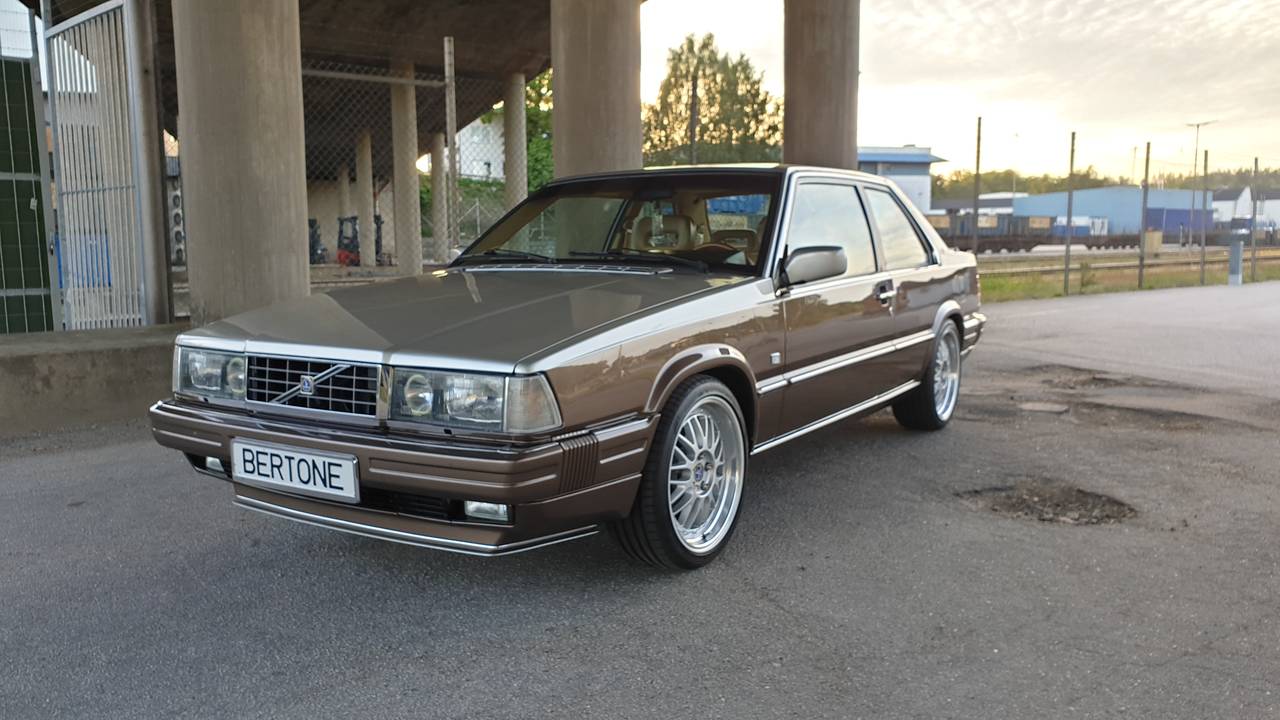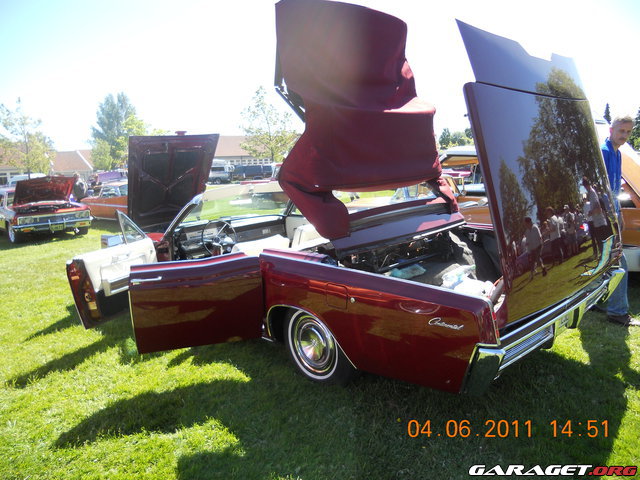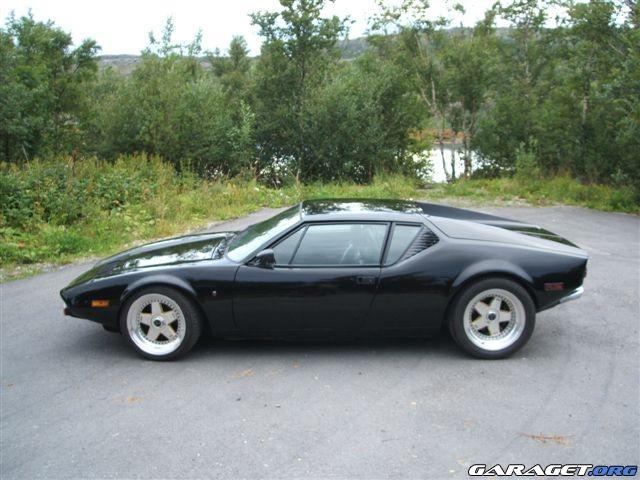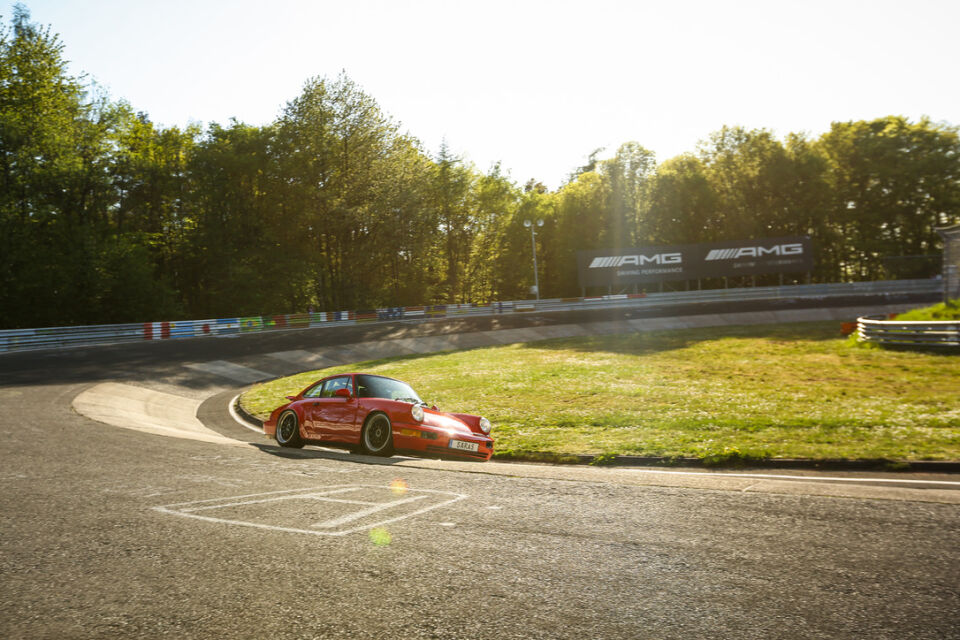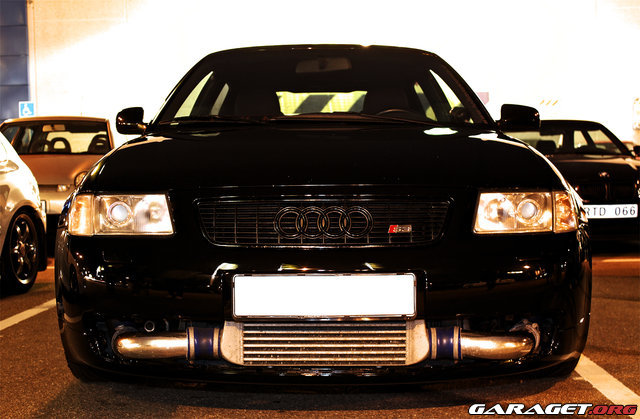8 573 visningar (14 idag)
Uppdaterad 8 augusti 2014
Skapad 14 november 2010
Effekt / Vridmoment
220 hk / 300 NmMotor, växellåda och avgassystem
The Alfa Romeo GTV (Gran Turismo Veloce) (English: Fast Grand Tourer) and Alfa Romeo Spider were two sports cars produced by the Italian manufacturer Alfa Romeo from 1995 to 2006. It is also known by Alfa Romeo's internal designation 916. The GTV is a 2+2 coupé, and the Spider is a two-seater roadster version of the GTV. Around 39,000 Spider and 41,700 GTVs were built from 1993 to 2004.
The GTV's name placed it as the successor to the long-discontinued Alfetta GTV coupé, whereas the Spider was effectively the replacement for the then 30 year-old Giulia Spider. The GTV was available until the launch of the Brera in 2005, while the Spider lasted another year until the launch of its Brera-based successor in 2006.
Alfa Romeo GTV is listed at no. 29 in Jeremy Clarkson's Top 100 Cars from 2001
Both cars were designed by Enrico Fumia[4] at Pininfarina.[5] The GTV was planned to re-establish the sporty coupe tradition of Alfa Romeo for the 1990s. The design dates back to initial renderings of September 1987 and first clay models to complete 1:1 scale model in July 1988.[6] After Vittorio Ghidella (Fiat CEO) accepted the design, Alfa Romeo Centro Stile under Walter de Silva was responsible for the completion of the detail work and also for the design of the interiors, as Pininfarina's proposal was not accepted.[3] The Spider and GTV were based on the then-current Fiat Group platform, called Tipo Due (or Type 2),[5] in this case a heavily modified version with an all new multilink rear suspension. The front suspension and drivetrain was based on the 1992 Alfa Romeo 155 saloon. Chief engineer at that time was Bruno Cena. Drag coefficient was 0.33 for the GTV and 0.38 for the Spider.
It is a typical Italian design, with the Alfa Romeo grille with dual round headlights, recalling the Audi-based Pininfarina Quartz, another design by Enrico Fumia from 1981. It is low-slung, wedge-shaped with a low nose and high kicked up tail. The back of the car is "cut-off" with a "Kamm tail" giving improved aerodynamics. The Spider shares these traits with the GTV except that the rear is rounded. The Spider featured a folding soft-top with five hoop frame, which completely disappears from sight under a flush fitting cover. An electric folding mechanism was fitted as an option.
Details included a one-piece rear lamp/foglamp/indicator strip across the rear of the body, the minor instruments in the centre console angled towards the driver. At its launch, many journalists commented that Alfa had improved overall build quality considerably and that it came very close to equalling its German rivals.
Awards[edit]
1995, Autocar Magazine: "1995 Car of the Year".
1995, Car Magazine: "Best Designed Car".
1995, Car Magazine: Best Design Detail in production.
1995: "The World's most Beautiful Automobile" award.
"Engineer of the Year" for chief Alfa Romeo engineer, Bruno Cena.
History
The exterior design was finished in July 1988. Production began in late 1993 with four cars, all 3.0 V6 Spiders, assembled at the Alfa Romeo Arese Plant in Milan. In early 1994 the first GTV was produced, with 2.0 Twin Spark engine. The first premiere was then held at the Paris Motor Show in 1994.[7] The GTV and Spider were officially launched at the Geneva Motor Show in March 1995 and sales began the same year.[8]
1997 changes[edit]
In 1997 a new engine, a 24-valve 3.0 litre V6, was available for the GTV along with bigger, 305 mm (12.0 in) brakes and red four-pot calipers from Brembo. The console knobs were changed from round central to rectangle ones and to a three-spoke steering wheel. Some versions were upgraded with different front bumper mesh to bring the wind noise down to 74 dBA.
1998 facelift[edit]
In May 1998 the cars were revamped for the first time (Phase 2), mainly the interior was changed with new center console, painted letters on skirt seals, changed controls and switches arrangement and different instrument cluster. On the exterior main changes included chrome frame around the grille and color-coded side skirts and bumpers. A new engine was introduced, the 144 PS (106 kW; 142 hp) 1.8 Twin Spark, and others were changed: the 2.0 Twin Spark was updated with a modular intake manifold with different length intakes and a different plastic cover. Power output of the 2.0 TS was raised to 155 PS (114 kW; 153 hp). Engines changed engine management units and have a nomenclature of CF2. The dashboard was available in two new colours in addition to the standard black: Red Style and Blue Style, and with it new colour-coded upholstery and carpets. 3.0 24V got a six-speed manual gearbox as standard. The 2.0 V6 TB engine was now also available for the Spider.
2000 engine revamp[edit]
In August 2000 saw the revamp of engines to comply with new emission regulations Euro3. New engines were slightly detuned, and have a new identification code: CF3. 3.0 V6 12V was discontinued for the Spider and replaced with 24V Euro3 version from the GTV. 2.0 V6 Turbo and 1.8 T.Spark were discontinued as they did not comply with Euro3 emissions. For M.Y. 2001-2002 only 2 engines are left, 2.0 T.Spark and 3.0 V6 24V, until Phase 3 engine range arrives. Arese Plant was closing and, in October 2000, the production of GTV/Spider was transferred to Pininfarina Plant in San Giorgio Canavese in Turin. GTV/Spider were the last Alfa Romeos made at Arese plant.
3 liter (181cui) Alfa Romeo V6. Alfa Romeo's in-house V6 engine design made its initial début in 1979 in the Alfa 6. Introduced in 2.5 L guise, production engines would eventually range from 2.0 L to 3.2 L displacement. With modifications it is possible to increase engine displacement to 3.8 L (~232 cu in). Initially developed in the early 1970s by Giuseppe Busso, the original SOHC 12-valve design employed short push-rods to operate the exhaust valves in a design similar to that of earlier BMW / Bristol engines. In 1993, the first DOHC version of this engine appeared powering the Alfa Romeo 164.
Manual Gear box, 6 gears
Original exhaust pipe with two silencers, a middle one and a rear one.
I Dec 2010 togs mellan ljuddämparen bort och ersättes med ett supersprint rakrör. Detta gjorde att mullret blev mer tydligt utan att bli för högt eller störande.Effekt och prestanda (ingående)
3.0 V6 24V
2,959 cc (180.6 cu in)
160 kW (218 PS) at 6,300 rpm
265 N·m (195 lb·ft) at 5,000 rpm
0-100 kmh 6.8 sec
Max speed 238 km/h (148 mph)
CO2 emissions 278 g/km
Euro3 compliant
Engine code AR 16105Chassi
The front suspension utilises a fairly conventional set-up that comprises MacPherson struts, offset coil springs, lower wishbones and an anti-roll bar.
The independent, multiple arm rear suspension comprises quadrilateral goemetry with an upper triangle, double lower arms, coil springs and anti-roll bar secured to a light alloy subframe which is, in turn, mounted onto the car's body. The design of this geometry, and the fine tuning of the bushes, is such that during initial stages of a turn, the centrifugal forces create a small 'rear wheel steer' effect in the opposite direction to the way the front wheels are being pointed. Then, as the centrifugal forces build up through the corner, the rear wheels start steering in the same direction as the front wheels. The result is a more positive 'attack' into the first stages of cornering and increased stability in the later stages. This multilink rear suspension was designed by Gianclaudio Travaglio.[6]Fälgar, däck och bromsar
Original fälgar "lenticolare" som det brukar heta på italienska eller "tele-dial" på engelska eftersom det påminner om en gammal telefon.
Momo Fälgar (oklar vilken modell) i lättetallfärg, dom som syns på bilderna
Pirelli däck är första valet för däck. Bil från Milano = däck från Milano (ioch förare från Milano förresten ;))
Storlek 225/45 ZR17 91W
Momo fälgarna var lite kantstötta av förra ägaren (såklart ;)) och blev sprutlackerade i guld, så som gammla sportalfor brukade ha.
Det är oklart i skrivande stund om dessa kommer att vara kvar i nuvarande färg eller om det kanske blir ett nytt försök nästa år. Guld passar lejongul inredning, och det vinröda lacken, men bilen blir lite för iögonfällande.Interiör / Inredning
Originalinredning i momo lejongul färg.
Jag gillar att det påminner mycket om en Ferrari 456
Damasker till växelspake och handbroms byttes 2012 med bättre kavlitets läder för en bättre känsla. Dom nya är också svarta men de har vit sömnader. Så inte riktigt som originalet men ändå inte för "skruvad"Bilstereo och multimedia
Alpine med blåtand blev det istället för det som fanns förut, en inte original pioneer.
original högtalarna är kvar och inte så bra. Borde bytas till nåt bättre.Exteriör / Styling
Lämnat så original som möjligt. Det är dags att lackera om för att få bort små stenskott men framförallt för att lösa problemet med klarlacket som släpper. Verkar vara ett vanligt problem, nu tar jag itu med det.
Det ska lackeras om ordentligt och med garanti av proffsFramtidsplaner
Hålla bilen så oskruvad som möjligt.
Omlackering i originalfärgÖvrigt
Installerade en snabbkoppling till CTEC smart batteriladdare. Väldigt bekvämt att ha den i garaget alltid inkopplad så att man inte behöver oroa sig för batteriet som blir urladdat

